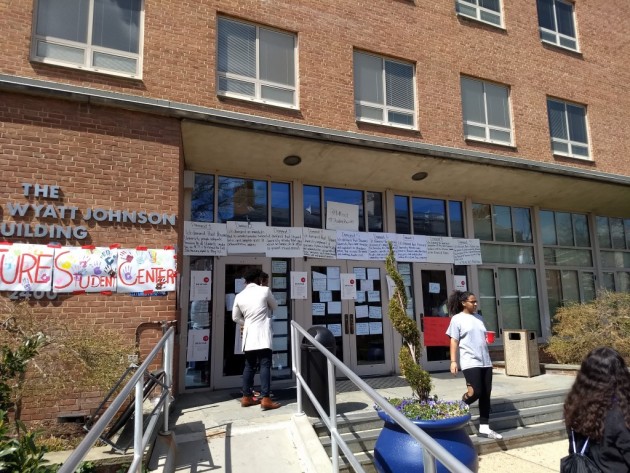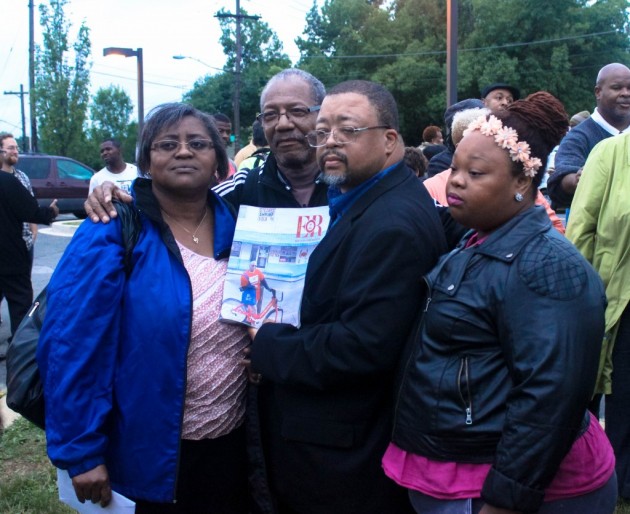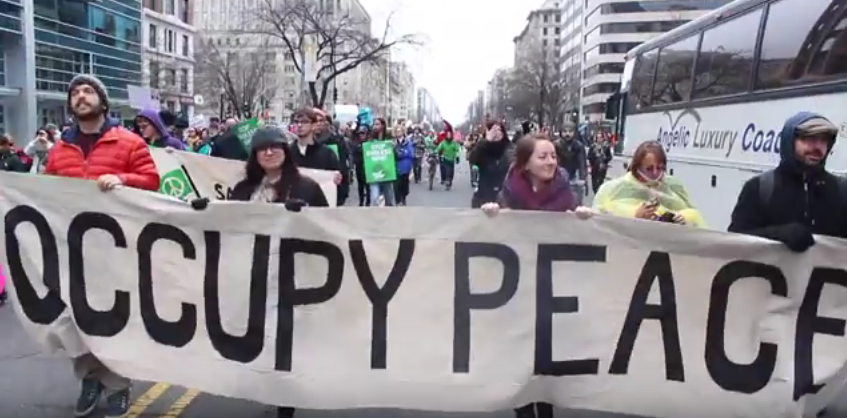Growing up during the 1940s Melvin Outlaw vividly remembers the nuclear bomb drills as a part of his childhood. At the sound of any fire alarm, he is reminded of the World War II era, a period when that alarm meant it was time to duck and take cover. The alarms went off randomly, without warning. The only thing he knew in those moments was that he was to hide under the desk in his South Philadelphia elementary school classroom. “We had little kid desks and that was all the protection we had,” said Outlaw, who now is 72 years old. He remembers the air-raid wardens that walked the streets in the night. If an alarm went off during the night, the rule was to turn off all of the lights in the home. This way, the neighborhood would be pitch black. That was the practiced routine, according to Outlaw, because if any lights were on, then it was believed that the enemy would drop the bomb in that area. “I’m seventy-something and I still remember. That was very prominent because if your light was on, he [the air-raid warden] would hit your door, hard, like he was going to knock it down,” he said. Outlaw grew up in an era when the first nuclear bombs were used in warfare. Yet, he is not fearful of a nuclear attack on the United States because he no longer considers it a real threat. Scholar says the Threat Remains
However, according to some experts, the threat of nuclear disaster is well and alive. Peter Kuznick, director of the Nuclear Studies Institute at American University, has been teaching there since 1995. His passion for education about nuclear weapons arises from his desire to want to preserve life. “People have gone to sleep on the issue but the danger is that a nuclear war could very well result in complete annihilation of life on the planet,” Kuznick said. Nicolas Roth, 26, is the Director in the Washington, D.C., office for the Nuclear Age Peace Foundation. “Nuclear weapons, in any form are a threat and you certainly don’t want countries increasing their nuclear weapons or their stockpile,” he said. According to Roth, there are two types of nuclear proliferation. Horizontal nuclear proliferation is the spread of nuclear weapons to other countries. It also applies to the spread of weapons to groups that did not previously have access to them. Vertical nuclear proliferation is the increase of nuclear weapons in a country or group that already had possession of such weapons. Finally, Roth told of a third type of proliferation that he labeled unofficial. “The third kind [of nuclear proliferation] is augmenting or improving the existing technology of the weapons that a state already has, which is what is going on in the United States,” Roth said. The number of nuclear powers continues to grow. According to the Kuznick, there are nine nuclear powers. The first country to have nuclear weapons was the United States in 1945, then the Soviet Union in 1949, and then Britain. France is a nuclear power and China became a nuclear power in 1964. Israel is suspected of having nuclear weapons, and India confirmed having nuclear weapons along with Pakistan. The most recent country to claim having a nuclear capacity was North Korea. Kuznick told that the increasing number of countries with nuclear weapons is also, increasing the chances that those weapons are going to be used. These conditions could lead to total nuclear anarchy. He gave the example: “Imagine what would have happened if they attacked the World Trade Center with nuclear bombs instead of just airplanes.” In an effort to stop nuclear proliferation, Kuznick continues to educate students about nuclear arms-strength and what they can do to stop it.
Appeal to Young People
Roth and his foundation are hosting a free conference, Think Outside the Bomb on April 21, 2007 at American University’s Kay Chapel. It will educate students about nuclear proliferation and how it can be stopped. The conference is co-sponsored by American University’s Nuclear Studies Institute and Americans for Informed Democracy, an organization that promotes awareness of global issues. Seth Green, President of Americans for Informed Democracy, said the target audience for the conference is the college-age generation because they are still optimists. “Young people are really idealistic and they don’t see the world as set so they believe that we can change the way that the world works,” said Green, 26. “If there is a feeling that we can get a nuclear-free world, then training young people to see a new vision is a very sensible priority.” It may be easier for the college-age generation to envision change but some still feel powerless. Elizabeth Finley, 22, said she believes that change is possible, but she does not think that she can cause that change. “I pretty much feel like I have no power. I feel helpless,” said Finley, a resident of Hyattsville, Md. The mentality of Finley is one that Roth hopes to change with his conference. Think Outside the Bomb aims to educate and empower people. He said that young people forget that Congress is accessible and that the voice of citizens is a powerful thing. Historically, movements by citizens have caused change in the nation. “Public pressures can be incredibly influential. Now, we’re at a crossroad and there needs to be that type of public outcry again,” Roth said. The stakes cannot be higher, Kuznick said, “The public, since the end of the Cold War, has not focused on the dangers of nuclear warfare [but] the immediate threat that still confronts us is nuclear annihilation.” Related Information: http://www.senate.gov/~feinstein/03Speeches/cdi10.htmhttp://www.state.gov/t/isn/rls/rm/40055.htm





